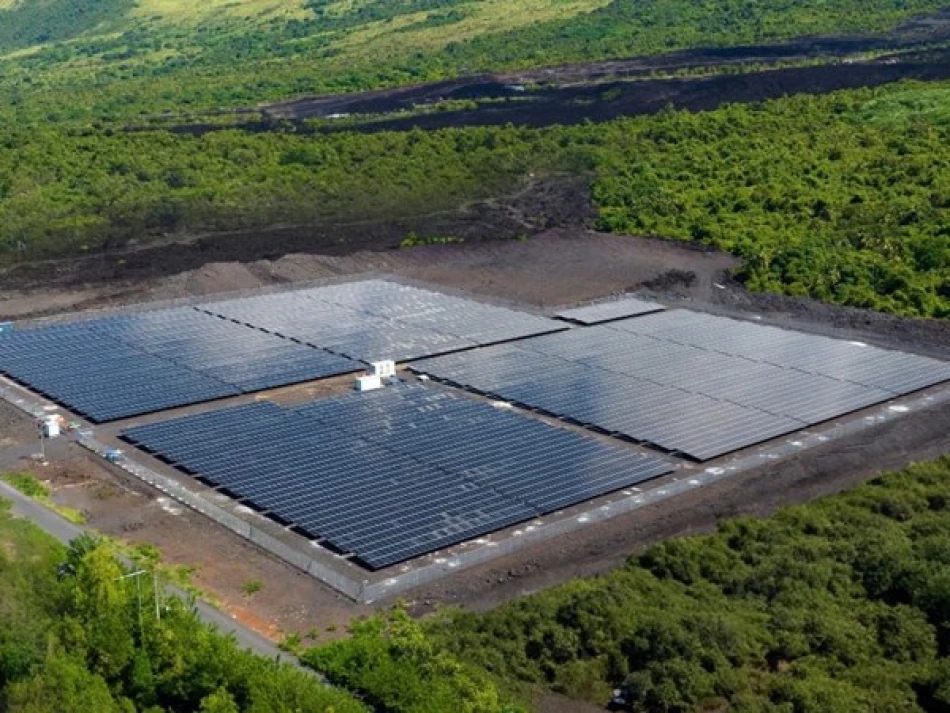
Abu Dhabi Fund for Development: A Strategic Partner in the Comprehensive Arab Development Journey
UAE's Abu Dhabi Development Fund Emerges as Major Regional Power Player Through Strategic Arab World Investments
The Abu Dhabi Development Fund has quietly positioned itself as one of the most influential development institutions in the Middle East, channeling over AED 216.5 billion ($59 billion) across 107 countries since its inception. With AED 810 million in fresh grants distributed to Arab nations in 2024 alone, the fund represents the UAE's calculated strategy to build economic influence while addressing regional stability through targeted infrastructure and technology investments.
Massive Scale Reveals Long-Term Geopolitical Strategy
The fund's 2024 annual report reveals the scope of UAE's development diplomacy: AED 157 billion in concessional financing, AED 57.6 billion in government grants, and AED 1.9 billion in direct strategic project investments. This isn't merely charitable giving—it's strategic economic statecraft that mirrors China's Belt and Road Initiative on a regional scale.
The approach differs markedly from Western development aid models. Rather than focusing on governance conditions or democratic reforms, the UAE prioritizes immediate infrastructure needs and economic stability—a pragmatic approach that resonates with recipient governments facing urgent developmental challenges.
Jordan Receives Lion's Share as Regional Anchor
Digital Healthcare Revolution
Jordan captured the largest portion of 2024 funding with over AED 452 million across three major initiatives. The centerpiece is the "Virtual Hospital" project—a digital health transformation program connecting five peripheral hospitals and three health centers across the kingdom through a unified digital ecosystem.
This initiative reflects a broader trend toward healthcare digitization accelerated by the COVID-19 pandemic. Similar virtual healthcare networks have proven successful in Estonia and Singapore, suggesting Jordan could become a regional leader in telemedicine services.
Strategic Geographic Positioning
Jordan's substantial funding allocation makes strategic sense. The kingdom serves as a stability anchor between volatile Syria and Iraq to the north and east, and Israel-Palestine tensions to the west. Strengthening Jordan's digital infrastructure and economic resilience serves UAE's broader regional stability objectives.
Diversified Regional Portfolio Spreads Influence
Morocco received AED 129 million for the Wadi Akrash-Ain Aouda road expansion, enhancing connectivity in the economically vital Rabat-Casablanca corridor. Yemen, despite ongoing conflict, secured AED 45 million for solar energy infrastructure on Socotra Island—a project that subtly reinforces UAE influence in the strategically important Arabian Sea location.
Mauritania's AED 184 million grant for an applied sciences college represents investment in human capital development, potentially creating future economic partnerships as the West African nation develops its mining and energy sectors.
Gulf Cooperation Framework Shows Deeper Integration
The fund's management of broader Gulf development programs reveals institutional sophistication. Since 2012, UAE has allocated AED 4.6 billion each to Jordan and Morocco through the Gulf Development Fund, while Bahrain received AED 9.2 billion under the GCC development program.
These figures dwarf many traditional development agencies and position the UAE as a major creditor nation—a remarkable transformation for a country that gained independence only in 1971.
Investment Projects Signal Commercial Strategy
Beyond grants, the fund's 2025 investment portfolio reveals commercial acumen. The Sofitel Legend Pyramids Giza project in Egypt targets the recovering tourism sector, while an integrated tourism development in Oman's Salalah positions UAE entities in the expanding Gulf tourism market.
The Bahrain Airport development project, which won the Abdul Latif Yousef Al-Hamad Development Award as the best Arab world development project in 2024, demonstrates the fund's ability to deliver world-class infrastructure that generates returns while building influence.
Energy and Connectivity Projects Reveal Strategic Priorities
Solar power projects in Comoros and the Gulf Interconnection Authority financing agreement signed in June 2024 highlight two key UAE priorities: renewable energy leadership and regional energy security. These investments position UAE companies as preferred partners while advancing the nation's clean energy expertise globally.
The housing project in Somaliland, though modest in scale, shows UAE's willingness to engage in disputed territories where other major powers hesitate—a calculated risk that could yield significant influence if Somaliland gains broader international recognition.
Market Implications and Future Trajectory
For investors and regional governments, the Abu Dhabi Development Fund represents a reliable, fast-moving alternative to traditional multilateral lenders like the World Bank or IMF. Projects move from conception to implementation rapidly, without lengthy environmental and social safeguard processes that can delay urgent infrastructure needs.
This model appeals particularly to governments seeking quick wins and visible development progress. As global development finance becomes increasingly competitive, with China, Gulf states, and traditional Western donors vying for influence, the UAE's pragmatic, results-focused approach positions it advantageously for continued regional influence expansion.
The fund's trajectory suggests UAE is building the institutional infrastructure for sustained regional leadership—transforming oil wealth into lasting geopolitical influence through strategic development partnerships.
Most Viewed News

 Layla Al Mansoori
Layla Al Mansoori






